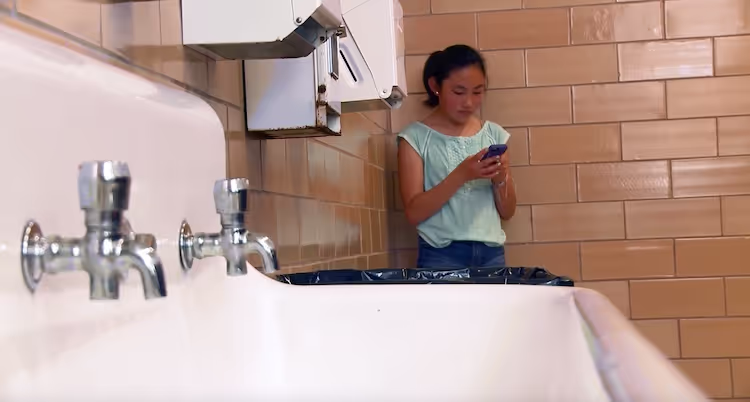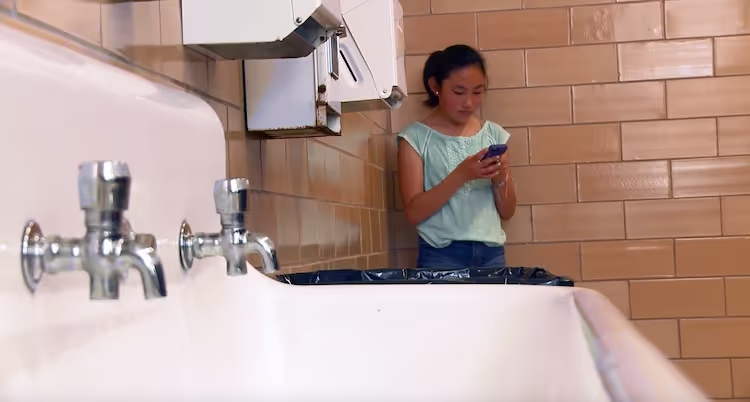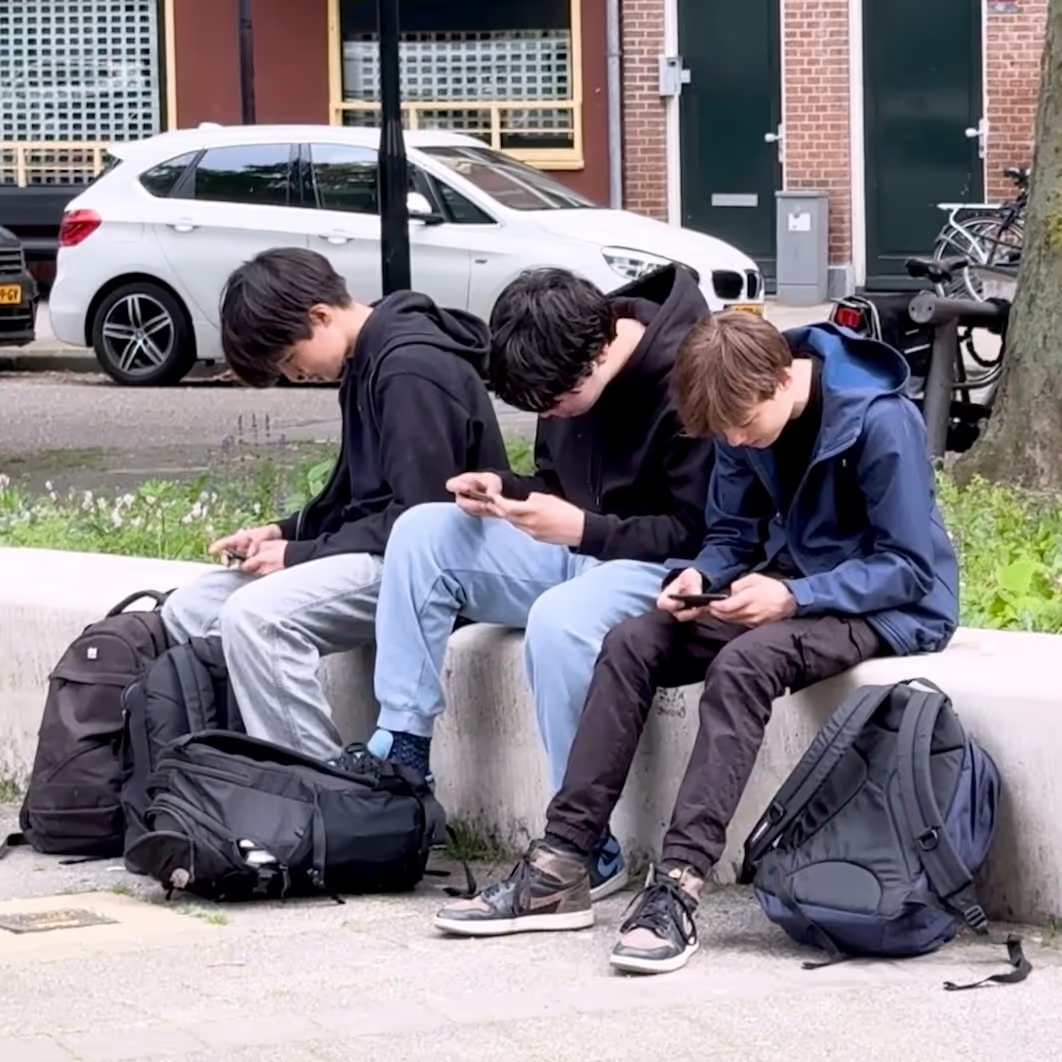



Last week I was talking with a counselor at a high school who told me about how the students immediately go on their cell phones when they leave classrooms and enter the hallways, and that she was “...sure they are all losing their ability to communicate.” When people have said this to me, I think they are often surprised by my response which is:
“I can relate to your concerns—but let’s also think about Aunt Jane or Uncle Joe who didn’t grow up with much screen time but, boy, do they struggle with effective communication.”
However, I don’t mean to say that a preponderance of screen time is not impacting kids’ communication skills—I believe there surely are effects. Sadly, there is practically no published research that compares communication skills of today’s youth to those of youth in the past. I would love to see data for such things as frequency of eye contact, ability to confidently talk to people of all ages, and confidence in expressing uncomfortable thoughts and emotions.
I am a big believer that communication is a teachable skill. We can all learn more productive ways to handle in-person interactions. During my medicine residency, mentors taught me how to navigate a multitude of communication challenges—such as with people from different cultures and end of life discussions. I realized there was an entire science of communication and I was eager to learn more—so after my residency, I went on to do a Fellowship in Medical Ethics focusing specifically on doctor-patient communication.
Let’s use this week’s Tech Talk Tuesday time to discuss communication skills with our children or students. I want to share a communication tool that comes from a field of therapy, called DBT (Dialectical Behavior Therapy), created by Marsha Linehan. It’s called DEAR, and it is great to use when anyone is about to ask for something that they are nervous about.
D = Describe the situation
E = Emotion you are feeling about the issue
A = Ask for what you want
R = Reiterate how it will benefit both of you if this can be worked out
My son, Chase and I talked today about DEAR, and he gave me an example of a friend he wants to try DEAR on this week. The friend is frequently off in the corner on his phone when the two of them are together. This is what Chase plans to do:
D = Describe to his friend that he sees him checking his phone much of the time they are together
E = Because of this Chase feels distant (the emotion) when they hang out
A = Ask him if they could try hanging out just one day with their phones entirely out of view
R = Reiterate that he thinks they would both have a better time together
So for TTT let's talk about communication. How do we improve our face-to-face communication skills? Here are some questions to get the conversation started:
Here is a video from the Screenagers YouTube Channel that talks more about this subject
Learn more about showing our movies in your school or community!
Join Screenagers filmmaker Delaney Ruston MD for our latest Podcast

Learn more about our Screen-Free Sleep campaign at the website!
Our movie made for parents and educators of younger kids
Learn more about showing our movies in your school or community!
Learn more about showing our movies in your school or community!
Join Screenagers filmmaker Delaney Ruston MD for our latest Podcast

Learn more about our Screen-Free Sleep campaign at the website!
Our movie made for parents and educators of younger kids
Join Screenagers filmmaker Delaney Ruston MD for our latest Podcast
As we’re about to celebrate 10 years of Screenagers, we want to hear what’s been most helpful and what you’d like to see next.
Please click here to share your thoughts with us in our community survey. It only takes 5–10 minutes, and everyone who completes it will be entered to win one of five $50 Amazon vouchers.

Last week I was talking with a counselor at a high school who told me about how the students immediately go on their cell phones when they leave classrooms and enter the hallways, and that she was “...sure they are all losing their ability to communicate.” When people have said this to me, I think they are often surprised by my response which is:
“I can relate to your concerns—but let’s also think about Aunt Jane or Uncle Joe who didn’t grow up with much screen time but, boy, do they struggle with effective communication.”
However, I don’t mean to say that a preponderance of screen time is not impacting kids’ communication skills—I believe there surely are effects. Sadly, there is practically no published research that compares communication skills of today’s youth to those of youth in the past. I would love to see data for such things as frequency of eye contact, ability to confidently talk to people of all ages, and confidence in expressing uncomfortable thoughts and emotions.
I am a big believer that communication is a teachable skill. We can all learn more productive ways to handle in-person interactions. During my medicine residency, mentors taught me how to navigate a multitude of communication challenges—such as with people from different cultures and end of life discussions. I realized there was an entire science of communication and I was eager to learn more—so after my residency, I went on to do a Fellowship in Medical Ethics focusing specifically on doctor-patient communication.
Let’s use this week’s Tech Talk Tuesday time to discuss communication skills with our children or students. I want to share a communication tool that comes from a field of therapy, called DBT (Dialectical Behavior Therapy), created by Marsha Linehan. It’s called DEAR, and it is great to use when anyone is about to ask for something that they are nervous about.
D = Describe the situation
E = Emotion you are feeling about the issue
A = Ask for what you want
R = Reiterate how it will benefit both of you if this can be worked out
My son, Chase and I talked today about DEAR, and he gave me an example of a friend he wants to try DEAR on this week. The friend is frequently off in the corner on his phone when the two of them are together. This is what Chase plans to do:
D = Describe to his friend that he sees him checking his phone much of the time they are together
E = Because of this Chase feels distant (the emotion) when they hang out
A = Ask him if they could try hanging out just one day with their phones entirely out of view
R = Reiterate that he thinks they would both have a better time together
So for TTT let's talk about communication. How do we improve our face-to-face communication skills? Here are some questions to get the conversation started:
Here is a video from the Screenagers YouTube Channel that talks more about this subject
Sign up here to receive the weekly Tech Talk Tuesdays newsletter from Screenagers filmmaker Delaney Ruston MD.
We respect your privacy.

Last week I was talking with a counselor at a high school who told me about how the students immediately go on their cell phones when they leave classrooms and enter the hallways, and that she was “...sure they are all losing their ability to communicate.” When people have said this to me, I think they are often surprised by my response which is:
“I can relate to your concerns—but let’s also think about Aunt Jane or Uncle Joe who didn’t grow up with much screen time but, boy, do they struggle with effective communication.”
However, I don’t mean to say that a preponderance of screen time is not impacting kids’ communication skills—I believe there surely are effects. Sadly, there is practically no published research that compares communication skills of today’s youth to those of youth in the past. I would love to see data for such things as frequency of eye contact, ability to confidently talk to people of all ages, and confidence in expressing uncomfortable thoughts and emotions.
I am a big believer that communication is a teachable skill. We can all learn more productive ways to handle in-person interactions. During my medicine residency, mentors taught me how to navigate a multitude of communication challenges—such as with people from different cultures and end of life discussions. I realized there was an entire science of communication and I was eager to learn more—so after my residency, I went on to do a Fellowship in Medical Ethics focusing specifically on doctor-patient communication.
Let’s use this week’s Tech Talk Tuesday time to discuss communication skills with our children or students. I want to share a communication tool that comes from a field of therapy, called DBT (Dialectical Behavior Therapy), created by Marsha Linehan. It’s called DEAR, and it is great to use when anyone is about to ask for something that they are nervous about.
D = Describe the situation
E = Emotion you are feeling about the issue
A = Ask for what you want
R = Reiterate how it will benefit both of you if this can be worked out
My son, Chase and I talked today about DEAR, and he gave me an example of a friend he wants to try DEAR on this week. The friend is frequently off in the corner on his phone when the two of them are together. This is what Chase plans to do:
D = Describe to his friend that he sees him checking his phone much of the time they are together
E = Because of this Chase feels distant (the emotion) when they hang out
A = Ask him if they could try hanging out just one day with their phones entirely out of view
R = Reiterate that he thinks they would both have a better time together
So for TTT let's talk about communication. How do we improve our face-to-face communication skills? Here are some questions to get the conversation started:
Here is a video from the Screenagers YouTube Channel that talks more about this subject

Many adults keep their phones by the bed — it feels harmless, even necessary. But what if that habit is quietly affecting our sleep and the example we set for our kids? In this week’s blog, Dr. Ruston shares two key things every parent should know about sleeping next to a phone, and how small nighttime tech changes can make a big difference for the whole family.
READ MORE >
From Call of Duty and Grand Theft Auto to violence and gunfire in movies and shows, aggression is a constant backdrop in boys’ media diets. And with various influencers and online personalities framing success through the lens of strength, competition, dominance and winning, boys are being handed a narrow script for masculinity. As parents, one of the most important things we can do is offer a counterweight. We can help boys strengthen empathy, compassion, and respect as core traits of masculinity, so they have a broader, healthier vision of who they can become.
READ MORE >
Last week we introduced you to our Screen-Free Sleep campaign! Since then, we’ve been flooded with emails and calls, and most are asking the same question: How can we get this spreading in our school? Today’s blog has the answers.
READ MORE >for more like this, DR. DELANEY RUSTON'S NEW BOOK, PARENTING IN THE SCREEN AGE, IS THE DEFINITIVE GUIDE FOR TODAY’S PARENTS. WITH INSIGHTS ON SCREEN TIME FROM RESEARCHERS, INPUT FROM KIDS & TEENS, THIS BOOK IS PACKED WITH SOLUTIONS FOR HOW TO START AND SUSTAIN PRODUCTIVE FAMILY TALKS ABOUT TECHNOLOGY AND IT’S IMPACT ON OUR MENTAL WELLBEING.
